Director in Training: Kim Collier on community infrastructure and working with multimedia
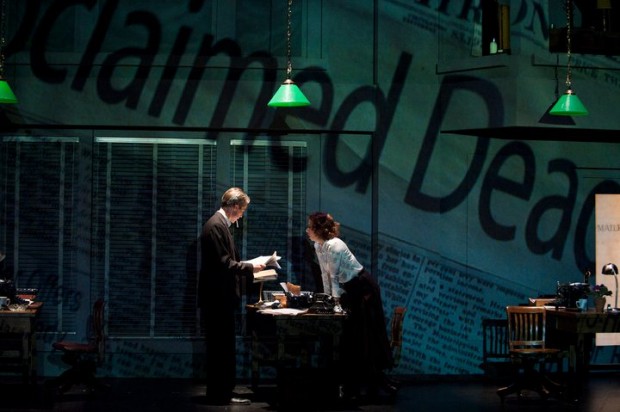
Jonathon Young and Dawn Petten in Tear The Curtain. Eventually Kim determined filmed and live sequences required different acting styles.
by Michael Wheeler
Probably the most surprising and luckiest thing about my professional development residency as Director in Training at The Tarragon Theatre is how much of it I ended up assisting and or observing director Kim Collier.
The decision to go to Vancouver to observe The Electric Company shoot a film for a multimedia piece they were working on as part of the Cultural Olympiad was a last minute add-on to a trip to Alberta to observe Tarragon Artistic Director Richard Rose as he transferred Courageous to The Citadel and directed Betrayal at Theatre Calgary. So it was an unexpected bonus when Kim and I hit it off, and the company invited me to return this summer, where I was her assistant on the World Premiere of Tear The Curtain at The Arts Club’s Stanley Theatre. In November, when The Electric Company’s Studies in Motion came to Canadian Stage (NOW Magazine’s #1 Show of 2010), I also had the chance to spend a week understanding how all the technology works in that show.
The combined effect of these experiences has been to explode my mind in terms of the possibilities that contemporary live performance offers, and I can’t think of a better set of experiences for someone who was searching to understand how complicated technical elements are integrated into large scale venues as a director. I had a moment during ‘video levels’ of Tear The Curtain where I found that I had abandoned my too-cool-for-school lounging seated posture to stand and make an “aaahhhh” kind of sound as the full scope of what Kim was about to accomplish literally came into focus. If you think I’m overdoing it here, I’m not the only one.
Beyond technical technique – I did learn a lot of less definable things as well. Working with Kim pre, during, and after winning the biggest prize in Canadian Theatre has been kind of amazing to bear witness to. Understanding the level of commitment and work ethic that gets you to that point in a career is another thing I will likely consider ad-infinitum. Seeing how the close knit group that comprised the core team behind The Electric Company’s productions worked is also something I want to keep in mind.
The biggest thing that has stuck with me about Kim though, is how dedicated she has been to her artistic community and fellow artists in Vancouver. Her accomplishments weren’t achieved by deciding how much of her time to spend on her art and how much to spend being a good community member. They are directly related factors and the improvement of one has led to successes for the other. Bottom line: If you want to do crazy shit – you have to work with your peers to make it possible. I asked Kim if she would talk to me over G Chat about this further and here’s what we talked about:
11:05 AM 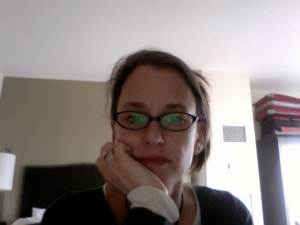 me: Hi Kim. Thanks for doing this
me: Hi Kim. Thanks for doing this
Kim: Very good, my pleasure.
11:06 AM
me: Are you in Montreal right now?
Kim: No I am in Toronto at One King West.
me: Oh cool, I was there yesterday with the camera for the Studies in Motion archival, it seems nice.
11:07 AM First thing I wanted to ask you about was Progress Lab. Can you describe what it is and how it came about?
Kim: Okay, let me do some writing.
me: Take your time. It’s a slow kind of interview-y thing.
11:14 AM
Kim: Progress Lab began as I was sitting on my front deck one morning thinking about the theatre and what I was curious to learn more about. I have always been fascinated with company management models and I had been thinking a lot about the divergent structures required for creation-based companies vs. companies that produce existing plays. There seemed to be no model to refer to, but rather the structures respond to the creation process.
Anyways, I was thinking about how I knew a lot about Electric Company and how we work creatively and as a company and thought it would be super stimulating to invite other creation companies together to discuss how they create and as well learn about their company models. We were fortunate to get a flying squad grant to help with this, so we struck a committee from the creation companies Neworld, Boca del Lupo, Radix and Electric Company and began planning a 5-day conference including guest speakers on the history of Vancouver Theatre, Creative Contracting, Blake Brooker to talk about One Yellow Rabbit, etc. Each company had a half day to talk about their work and creation processes and all the companies shared ideas around management, etc. Individual creation artists were invited too as well as the larger community to open sessions. We produced a written record of these meetings.
In the end, we found so much common ground and advocacy ideas that we realized we wanted to keep meeting on a regular basis. But with so many people is was hard to pick dates fairly. So we began this idea of meetings on the full moon- kind of a half party, half dialogue sessions at someone’s house. When you arrive you would write down hot topics for the night to talk about. Then we used a stopwatch and gave each topic say 10 minutes or half hour – that sort of thing. These informal sessions where spaced between party sessions say for 1/2 hour or hour. After that we would just drink and eat and talk.
11:18 AM
11:20 AM When the stopwatch finished we would talk about more hot topics. By the end of the night you have a great party going but also the conversation was focused. We have been doing these informal party / dialogue meetings for years now. The idea is inclusive…if you want to come…you ask but the focus is still Artistic Directors, Creators, and now Producers too.
11:24 AM The great thing is, good ideas are always born, advocacy ideas initiated, shared information on grants or ways to lobby, new ideas for shared programming like Hive. But most importantly these parties have built community and have often helped people go on when they are fatigued in their AD or Producing roles. They don’t feel so alone in their struggle and it helped to be in the company of others who share the same challenges but ultimately whom inspire you.
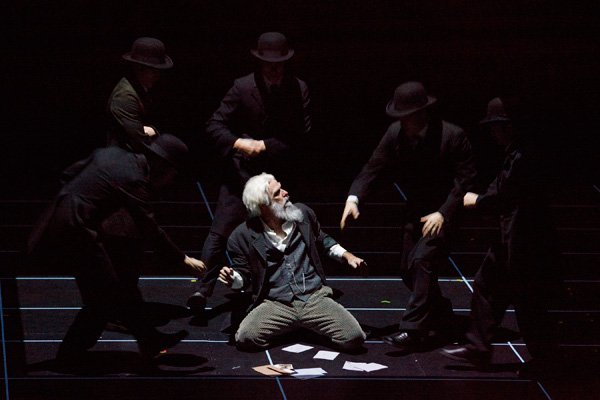
Andrew Wheeler as Eadweard Muybridge in Studies in Motion. As better projectors increased the visibility of performers over the several years that this show toured Canada, actors had to increase the subtlety of their performances.
11:25 AM Me: So these meetings generated the idea for Progress Lab?
11:26 AM Kim: : Progress Lab are these meetings. Progress Lab is not a producing body, it is an gathering of theatre people in dialogue
although outsiders have come to view is at a body. It just so happens coming out of a great party night drinking scotch on my back deck we all agreed to make the first Hive together. The idea was hatched at a Progress Lab meeting. By this time Progress Lab was hosting the presence of 11 companies: Theatre Skam, Neworld, Electric Company, Leaky Heaven Circus, Rumble Productions, Boca Del Lupo, Only Animal, Western Theatre Conspiracy, Radix, Felix Culpa, and Theatre Replacement.
11:29 AM me: One more thing about Progress Lab – it is also a building. How are the people and building related?
11:36 AM Kim: : The building is four companies coming together around our collective desire to have a production space for making our theatre art. The four companies Electric Company, Neworld, Boca del Lupo and Rumble Theatre were/are sitting at a similar operating support base. There was a logic to partner with people you like, work you respect, but also with companies that in terms of their infrastructure and finances would be able to come to the table around this vision equally.
Me: Okay so, can you explain what Hive is and how it came about?
11:46 AM Kim: At the core we wanted Hive to bring us together as artists, to put us in the same space creating side-by-side and to be fueled by this relationship. As well we wanted it to be spontaneous and the created work to happen at the same time together. So we booked the space, would draw lots for what area in the space you would get, and then we would have two weeks to create an installation like work for a small audience.
We wanted to reach out into our larger community and create an event that would be undeniably fun and intriguing and provide an access point to the theatre for perhaps an audience that does not currently attend theatre. So the event houses 11 installation pieces around a central cafe and bar. Audience members can come and go between pieces, chat at the bar about what they have seen and then take another offering from the smorgasbord of theatre. After three hours, the artists pour out of the spaces and join the audience for another part of the evening -centered around the programming of a band or DJ. This means we are again in dialogue with each other and our audience.
11:48 AM me: The band/DJ element reminds me of the approach Summerworks and The Fringe have also taken to make the experience of theatre seem more appealing than just sitting in an uncomfortable chair for two hours in an itchy wool turtleneck.
Kim: Yes, well theatre can be anything can’t it – provided there is a audience and a performance element.
11:51 AM me: Speaking of which – your production of No Exit came up unprompted in the comments of a recent post: We were talking about the necessity of a “live” audience in theatre and the production was cited as a “live” show where the performers had sections with no connection with the audience. First off – was that the case? Did the performers have no sense of the audience that was there when they were performing for cameras offstage or was it recorded? Also – how did that change the nature of the performance?
11:58 AM Kim: The performers performed live to 7 cameras, on stage but unseen because they were in a room. But they entered live and could be seen live in action whenever that door opened. Their performance on the 3 projection surfaces was in a way mediated by the live performer – the valet on stage. We connected I think in a “live” way to the performers in the room through him. Nevertheless, I consider the performance utterly live, because it is all live, just not seen in the usual way.
me: A lot of your work involves some intersection between live and projected performance. Do you find you have to direct actors differently because they have to create performances for different mediums?
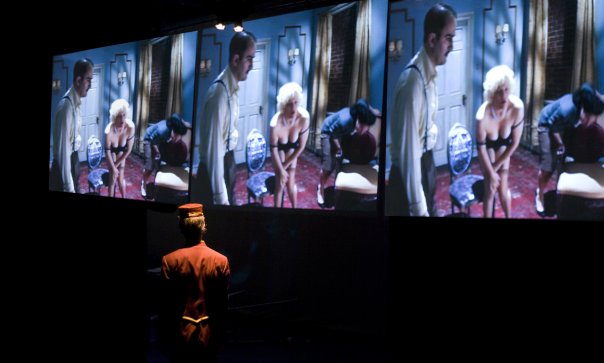
Jonathon Young (foreground), Andy Thompson, Lucia Frangione, and Laara Sadiq in No Exit. Some actors perform live for an audience via offstage cameras.
12:03 PM Kim: Yes, i do think the performers find this challenging. In No Exit the performers in the room can’t really feel the audience but they can hear them. The performance is very minutely staged. Inside the room, what the performers have to do to stage themselves into the cameras and build blocking to be realized in the projections is radically different then how they would normally related to each other in their given situations.
12:10 PM But it is not just a question of mediums – it is also about content and what you are hoping to achieve with the piece and the style of the piece. In the case of Studies in Motion– in 2009 the projections lighting the actors was low, we had to bump our performance style in order to communicate effectively with the audience through the dimmer light. However, now in 2010 our projectors are stronger and therefore the acting style more flexible to subtle moments. In Tear The Curtain, we needed to be very sensitive to the intimacy of the camera for the film units and create believable characters in that context. We thought that our stage units would draw on a more film style of acting to create a stronger unity to the piece, but in the end, I felt that our stage techniques in performance were very important to maintain in the stage sections to not only balance the work against each other, but to communicate the story.
12:13 PM me: Cool. So – this use of video, projection and a mix of mediums seems to be a growing performance genre. How do you recommend emerging artists learn more about creating this sort of work? Is there any key equipment or philosophy to creation so that we all don’t reinvent the wheel?
12:21 PM Kim: Experimenting is important. To be in a rehearsal room and try things out, get a feel for how your mediums will work together. At Electric Company we started doing design dramaturgy. This dramaturgy lives beside the more traditional view of dramaturgy. As we build plays we need to analyze of course not just the words in development, but the piece as a whole; which is all the elements that come together. Knowing your gear is super important – understanding both the creative potential and the creative limitations of the gear. As well, knowing the media design process in relation to your larger process is so important. I attempt to marry the media right into the work as soon as possible in the rehearsal room.
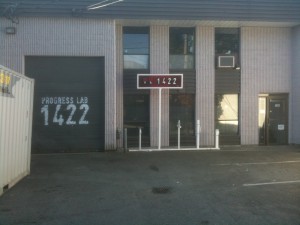
Progress Lab (the building)
12:22 PM me: So just to pull everything together here – Progress Lab (the building) must be really great in terms of facilitating that sort of creative process.
12:27 PM Kim: Essential. We came to understand at Electric Company that the most important next step we could take to support our work was to secure the creation/working space. Waiting till tech in the theatre to bring your elements together seemed too late for us in terms of making work that in very interdisciplinary; it leaves a large part of your process very vulnerable. We love the new space and are so excited to be able to now build work with that incredible support of a space in which we can rig, project, build our sets, etc
12:28 PM me: Amazing. Okay – well that took longer than I thought but I didn’t want to stop as it was all so interesting. Can you take a picture of yourself with your computer and send it in? Thanks for doing this Kim. You’re the best.
Kim: Bye!







[…] dialogue happening in the comments section. Take a moment and check it out! Edit 2.0: Here is an awesome post from Michael Wheeler at Praxis Theatre that goes more in depth with regards to how Electric Company […]